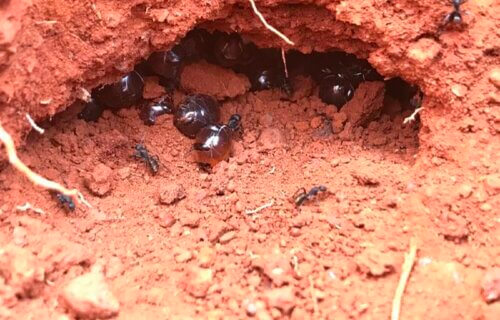SYDNEY, Australia — Mainstream science is finally recognizing the medicinal properties of ant honey, a substance indigenous Australians have been using for centuries. According to a new study, this sweet substance carries strong antimicrobial properties. Indigenous Australians have been using ant honey for generations to treat colds and sore throats.
Scientists from the University of Sydney’s Carter Lab, led by Professor Dee Carter, studied the Australian honeypot ant, Camponotus inflatus. This ant species is found in desert areas, mainly in Western Australia and the Northern Territory. Certain ants in their colonies become overfed workers, with their abdomens inflated with honey, appearing translucent and amber-like. These ants act as “vending machines” for the colony, regurgitating honey when food is scarce.
“For our people, honey ants are more than just a food source. Digging for them is a very enjoyable way of life and a way of bringing the family together,” says Danny Ulrich, from the Tjupan language group, who runs honeypot ant tours in Kalgoorlie, Western Australia, in a media release. “Our people have been enjoying sweet honey ants for thousands of years. As for its medicinal use, we use it for sore throats and sometimes as a topical ointment to help keep infections at bay.”

The study conducted by the Carter Lab marks the first time ant honey has been investigated for its medicinal properties. The researchers found that ant honey possesses “unique” antimicrobial activity against bacteria and fungi. They confirmed that its mechanism of action is different from that of Manuka honey, a well-established topical treatment for wounds and skin infections.
“Our research shows that honeypot ant honey possesses a distinctive effect that sets it apart from other types of honey,” says Dr. Kenya Fernandes from the Carter Lab team. “This discovery means that honeypot ant honey could contain compounds with substantial antimicrobial power; identifying these could provide us with starting points for developing new and different types of antibiotics.”
The researchers discovered that ant honey is effective against Staphylococcus aureus, a bacterium commonly known as golden staph, which can cause skin and nasal infections. Additionally, ant honey demonstrated potency against two species of fungi, Aspergillus and Cryptococcus, both found in soil and capable of causing serious infections in people with weakened immune systems.
“This study demonstrates that honeypot ant honey has unique antimicrobial characteristics that validate its therapeutic use by Indigenous peoples. Taking something that has been honed by evolution to work in nature and then applying this to human health is a great way to come up with therapeutic strategies,” adds Prof. Carter.
The research is published in the journal PeerJ.
South West News Service writer Stephen Beech contributed to this report.

